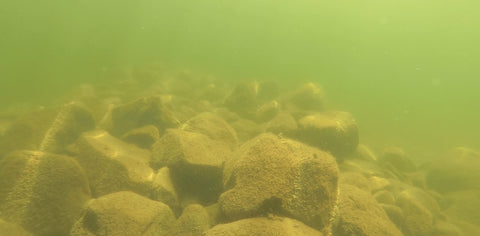Fish are fascinating creatures that are popular targets for anglers. Understanding fish behavior is essential for any angler who wants to catch fish. Fish have three basic urges that they need to satisfy: a safe territory with appropriate light, temperature, and dissolved oxygen content; a ready supply of food; and the opportunity to reproduce and perpetuate their species.
Habitat is one of the most critical factors for fish. A fish seeks a comfort zone, preferring to locate in a temperature layer that also provides safety. Environment and instinct dictate a fish's behavior patterns. For example, a smallmouth bass blends well with underwater rock bars and shelves. Rocks provide smallmouth bass with camouflage (safety). Rocks are also home to one of the smallmouth's favorite foods, the crayfish. A savvy smallmouth angler looks at a fishing map and finds underwater rocks, then fishes only those areas suitable for bass.

Food supply is another critical factor for fish. Fish must eat regularly. Once an angler knows the basic diet of the species they seek, they can locate areas where that food supply exists. For example, Muskellunge prefer suckers in their diet, particularly the common white sucker. These suckers prefer flowing water. An angler can look at a map and find shallow bays fed by creeks or small rivers. These areas are likely to attract suckers, and therefore, muskie. Casting brownish-gray sucker-pattern plugs that mimic the forage will increase an angler's chances for success.
Reproduction is the third critical factor for fish. Every species of fish has a specific set of criteria for carrying out its reproductive chores. For example, the white bass spawns when water reaches 58 degrees. Schools of whites seek gravel bottoms in 6 to 7 feet of fairly clear water with either a measurable current or significant wind action to successfully reproduce. If an angler fishes for white bass in any of the nation's large reservoirs, they will want to fish when the water temperature and conditions are right.
Other factors that affect fish behavior include structure, light penetration, and water clarity. Structure provides fish with protective cover, leads them to food, and may provide shade from the sun's rays. Fishing maps identify these features, such as weed edges, submerged points, off-shore humps, mud flats, and rock reefs. Light is another factor in determining fish location. Fish usually prefer shade to unshaded areas. Light penetrates clear water much more intensely than cloudy water. Fish tend to frequent deeper water in gin-clear lakes compared to lakes with water the clarity of coffee mixed with cream.

In conclusion, understanding fish behavior is essential for any angler who wants to catch fish. By knowing the basic urges of fish and their behavior patterns, an angler can more easily locate fish and catch them. Fishing maps are an essential tool that can help anglers identify areas with the right habitat, food supply, and structure, leading to a more productive fishing trip.

